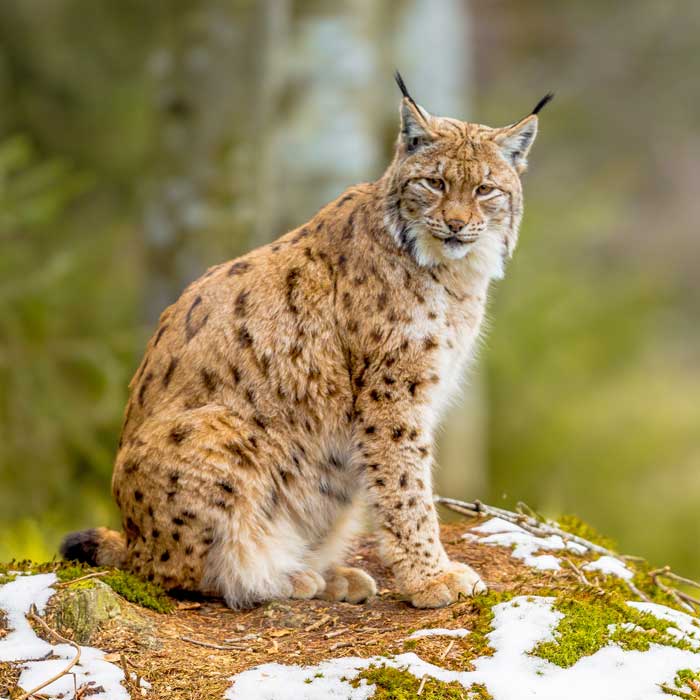
lynx
The lynx, a majestic predator with distinctive brush ears, is a symbol of pristine forests and remote mountain regions. This fact sheet provides a detailed overview of the biology and ecology of the lynx and highlights the importance of its protection and conservation in natural habitats.
lynx Products
-
Animal display lynx
Regular price From 109,90€Regular priceUnit price / per -
Life-size deer foot stamp
1 reviewRegular price 159,90€Regular priceUnit price / per -
Life-size deer foot stamp
No reviewsRegular price 29,90€Regular priceUnit price / per -
Animal display lynx - outdoor set
No reviewsRegular price 125,50€Regular priceUnit price / per -
Pop-Up Wall "Forest Habitat"
No reviewsRegular price 300,00€Regular priceUnit price / per -
Pop-Up Wall "Forest Habitat"
No reviewsRegular price From 1.200,00€Regular priceUnit price / per -
Wildlife Sticker Set
No reviewsRegular price From 9,90€Regular priceUnit price / per
Profile: lynx
-
Scientific classification
- Class: Mammalia (mammals)
- Order: Carnivora (predators)
- Family: Felidae (cats)
- Genus: Lynx
- Species: L. lynx (lynx)
-
Physical characteristics
- Size: Body length of 80-130 cm
- Shoulder height: 60-75 cm
- Weight: 10-25 kg, depending on gender and region
- Special features: Striking brush ears with black tufts of hair, short-tailed body, dense, grey-brown fur with a spotted pattern.
-
Habitat and distribution
- Common regions: Europe, North America, Asia
- Habitat: Mainly boreal and temperate forests, but also mountainous regions, tundra and bushland.
-
Nutrition
- Diet: Carnivore
- Typical food: small mammals (e.g. hares, rodents), birds, occasionally deer and other medium-sized prey.
-
Reproduction and lifestyle
- Mating season: Spring
- Gestation period: Approx. 70 days
- Litter size: 1-4 young per litter
- Brood care: Females raise the young alone
- Social structure: Mostly solitary outside the mating season
-
Lifespan and protection status
- Life expectancy: Up to 15 years in the wild
- Endangerment status: Varies by region, locally threatened by habitat loss, poaching and traffic accidents.
- Conservation measures: conservation and protection of habitats, monitoring and research on the population situation, establishment of protected areas and conflict management.






